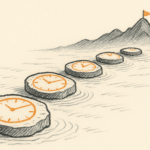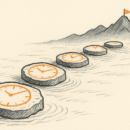Why your little neighbourhood shop may be thriving

Let me tell you the story of S, who runs a little shop—a kaduka—in my hood.
S started off operating from a tiny makeshift kiosk. He was the milk ’n’ bread guy for our house, and for many on our street. Every morning the regular order would arrive, like clockwork—one less thing for us to think about. He had his assured income; his customers got their daily essentials.
Something interesting happened as the coronavirus pandemic took root in early 2020, though. As more and more people shirked the regular shopping trip to the big supermarket, S saw an opportunity to offer more items. Slowly, he started adding essential grocery and household goods, and using riders on bicycles to deliver them right to the door.
The result, 18 months later? We’ve just calculated that S, from being just the maziwa-na-mkate guy two years ago, now takes 30 per cent or more of our household grocery spend! Everything from gas to olive oil, from paracetamol to pasta is now coming from S’s place.
This is not an isolated story. Local neighbourhood shops have grown fast all over Nairobi in recent months—provided their owners were astute enough to take advantage of the opportunity. S moved to permanent premises, added storage space, invested in bicycles—and now, in motorbikes.
Think about it. This was a period in which massive digital accelerations occurred all over the globe. Folks who had never dabbled in e-commerce or electronic payments or virtual meetings were suddenly thrown headlong into that world. Why would a neighbourhood kiosk thrive? Many in fact died, killed by the lower prices and convenience of online shopping. S has no website, no app, no virtual storefront. But he has a pool of dedicated customers, all giving him a healthy share of spend. What’s going on?
To understand that, we must look at the specific needs being fulfilled. Convenience, and speed, and reliability. Those can be fulfilled digitally, or they can be done in very analogue ways. Customers don’t care as much about the method as they care about the result. Anyone who spares them the need to think too much, waste too much precious time, or worry about stuff arriving intact—that vendor wins.
I wrote recently about the ultrafast delivery apps that are all the rage in western cities. Well, S and his ilk are doing the same right here in urban Africa. Using no more than a phone line or two, storage space, and some bicycles, they are winning. Who’s losing? Those traditional established retailers who have neither gone digital fast enough nor upgraded their in-store experience in any meaningful way.
What’s the lesson here? Opportunities abound, even in highly competitive markets. What is needed is the sharpness to spot changes in those markets, to understand trends, and to reposition to take advantage. S also makes good use of mobile-money platforms; he receives daily orders on WhatsApp; he is connected to a range of wholesale suppliers. He figures it out, and does a job in the lives of his customers. Boom.
Oh, and there’s something else. He’s also a pleasant and eager and likeable chap. We all enjoy supporting him, and wish him well. Isn’t that the missing link in customer experience everywhere? When did you last feel affection for a big business? When did you feel you should buy from them even if they are a little more expensive, simply because you like these people? In my own courses in strategy and customer excellence, I I emphasise this simple point: your path to success is often hidden in plain sight, right under your nose.
What’s over-present in the lives of modern urban consumers? Stress, annoyance, inconvenience. What’s missing? Time, relaxation, human bonding. The business that can remove some of the former and provide a bit more of the latter will be valued highly. And if that can be done with a smile and a pleasant word or two? Hey, start counting your money.
We are in a fascinating era, in which new digital ways of pleasing customers pop up every day—and yet, the analogue world has not been brushed out of the picture, either. The path to success in business is the same as it has ever been: focus on customers, understand their lives, offer ease and release in those lives. The simple kaduka guys know this just as well as the silicon geeks do.
Tech giants use huge investment dollars and massive scale to thrive; small players use their granular local knowledge to maintain their own niches. As Amazon grows exponentially, so does Shopify, which allows small retailers to build their own virtual storefronts at little cost. As supermarkets embrace online selling at scale, an army of locally savvy little guys matches and even outguns them using makeshift tools.
Long may they thrive.
(Sunday Nation, 16 January 2021)

Buy Sunny Bindra's new book
The X in CX
here »
Popular Posts
- The map will appear—once you start walking.July 6, 2025
- We’re letting the bad drive out the goodJuly 20, 2025
- Where are you rushing to—your funeral?June 29, 2025
- The grace of the giverJuly 27, 2025















